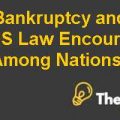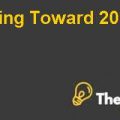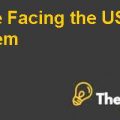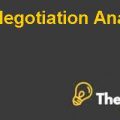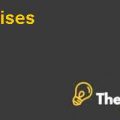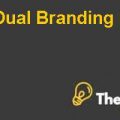Elizabeth Arden Executing Supply Chain Re-Engineering Case Study Solution
Background
Elizabeth Arden, the cosmetic company has good strength in its product portfolio and well known to consumers due to its various cosmetic products worldwide. However, the company was performing sub-optimally as compared to the industrial benchmark and internal aspirations. Meanwhile, the increasing cost of logistics including distribution, outbound as well as supply chain overhead including the demand, material planning and purchasing labor.Since the expenses of those operations were increasing as a percentage of net sales.
Similarly, the company has no proper planning and forecasting technique, neither it has been using the market intelligence and strategic account management. However, the conventional techniques of planning and forecasting led to a noverest imation of important products with an error of 25% in estimation.Also, the company has independent suppliers that were responsible for obtaining all the raw material components, packaging products and contract filler to manufacture finished products. Similarly, it has maintained relationships with many independent suppliers, by whom it makes purchase orders.
However, the company used to purchase all raw materials from six independent suppliers and then the material was shipped to the contracted manufacturer. That created complex management of logistics in the company and because of which the cost of the supply chain was increasing along with the inventory caring cost. The inventory caring cost of the company was 4.2% of the net sales and 7.2% of the cost of goods sold. Similarly, the company was also experiencing errors in volume forecast that kept on varying by 30% which resulted in increased lead time and drove logistics costs above the industrial average cost.The company also has concern to improve fill rate.
Consequently, the company has manual labor intensive purchasing process and no centralized management system to take a look at the strategic purchasing. Due to this company was spending high cost on direct material purchasing and was not able to consolidate spending across brands and commodities.Moreover,the company uses the economy of scale to negotiate on the cost of material with the suppliers. However, the company has no plan in managing its procurement and supply chain to be viable in the market because the increasing complexity of the logistics fueled the cost.
Analysis and Evaluation
The company has a capital structure which is divided into debt and equity, whereas it has 41% debt and 59% equity.However, if we analyze the company’s balance sheet,(See Exhibit 1),which shows that company’s assets had increased by 24% in 2007 from 6% in 2006. It indicates that company is investing in long-term assets. Meanwhile, its short-term debt rose by 144 %, which indicates that company might have insufficient funds to meet with daily operations, although its working capital has also increased in that year to 6% from 2%. However, its long-term borrowing remains stable.Through this, we can analyze that there is variability in inventory which has been reduced by 33% in 2007 whereas, it had increased by 108% in 2006.
In addition to that, it can be determined that the company was not managing its inventory effectively, or there is no proper planning and forecasting of demand.Similarly, if we take a look at the company’s income statement(See Exhibit 2), we can determine that company’s net income has not increased significantly although its net sales increased by 18% in 2007.It shows that the company is not operating efficiently to cut the cost and to make a profit.That is how the company is operating. Evidently, the company’s operating expenses are high and there is no economy of scale in selling the products that could give profit to the company.
However, the company’s purchasing management is very weak and has no efficiency in managing the inventory effectively resulting in high inventory turnover and slow moving units which is result of lack of forecasting and planning in the company. Similarly, the company’s cost of caring inventory is also increasing,which shows that slow moving inventory is increasing. On the other hand, company’s increasing logistics cost indicates that the company has no strategic purchasing management which has resulted in increased cost of material and cost of doing business. It also has increased the lead time for the company.
The company has manual purchasing process with no proper planning and forecasting.Therefore, the technique that the company is using has a variability of 30%. On the other hand, as we have gone through the company’s financial statements,(See Exhibit 1, 2)which clearly state that company’s net income has not increased although the net sales increased in 2007. Meanwhile, the operating cost and cost of goods also increased with the same pace as in previous year. That shows that company has good strength to operate in the market and its products could be the competitive advantage for the company. Our analysis shows that company has no strategic purchasing management.
Recommendations
Company’s product line is well known in the market, and it has a good brand image that drives company’s revenues. However, beyond its good financial standing, the company is experiencing some major problems in supply chain, logistics, increasing lead time, poor fill rate and increasing cost of logistics. Hence, it is recommended to the company that firstly, it should take the form of strategic purchasing unit that could prepare a purchasing plan for the company through selected suppliers in the market over the short-term period to benefit from the market trends and negotiate over the price due to economies of scale. Secondly, the company should form a perfect sales management team that could prepare, plan and forecast the sales through utilizing the marketing intelligence data.
Elizabeth Arden Executing Supply Chain Re-Engineering Harvard Case Solution & Analysis
It would help the company to reduce the low moving inventory, eliminate the caring cost of inventory and better management of inventory. On the other hand, the company would be able to increase its sales and improve the fill rate in the market. Meanwhile, the strategic purchasing unit would be responsible for providing material at possible lower rates through negotiating with the supplier mutually. Furthermore, it would be able to form new strategic alliances in the market to enhance its distribution channel and to place its products in the market strategically in order to compete with the rivals by cost controlling and increasing proficiency in operations. Indeed, the company would be able to manage all its issues at first glance. Therefore, the company should take a step towards forming two different strategic business units....................
This is just a sample partial case solution. Please place the order on the website to order your own originally done case solution

